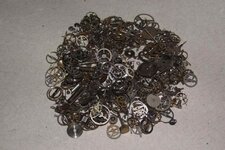Ulises Victoria
Member
Hello all.
I am determined to make a pen with watch parts cast in acrylic, to enter a crafts contest at the end of this month.
I already have a bunch of watch parts and gears I got at amazon.com.
My doubt is about the gluing of the parts.
In my 2 previous and failed attempts, I painted the tubes black and then glued the watch parts with minute amounts of CA. My concern now is that the resin gets extremely hot when curing, and heat is the worst enemy of CA... or so I've heard. So there is a chance that the parts unglue and end getting loose in the resin. What are other alternatives? Epoxy reacts to heat the same as CA, no?
Any information will be most appreciated.
I am determined to make a pen with watch parts cast in acrylic, to enter a crafts contest at the end of this month.
I already have a bunch of watch parts and gears I got at amazon.com.
My doubt is about the gluing of the parts.
In my 2 previous and failed attempts, I painted the tubes black and then glued the watch parts with minute amounts of CA. My concern now is that the resin gets extremely hot when curing, and heat is the worst enemy of CA... or so I've heard. So there is a chance that the parts unglue and end getting loose in the resin. What are other alternatives? Epoxy reacts to heat the same as CA, no?
Any information will be most appreciated.
Last edited:

